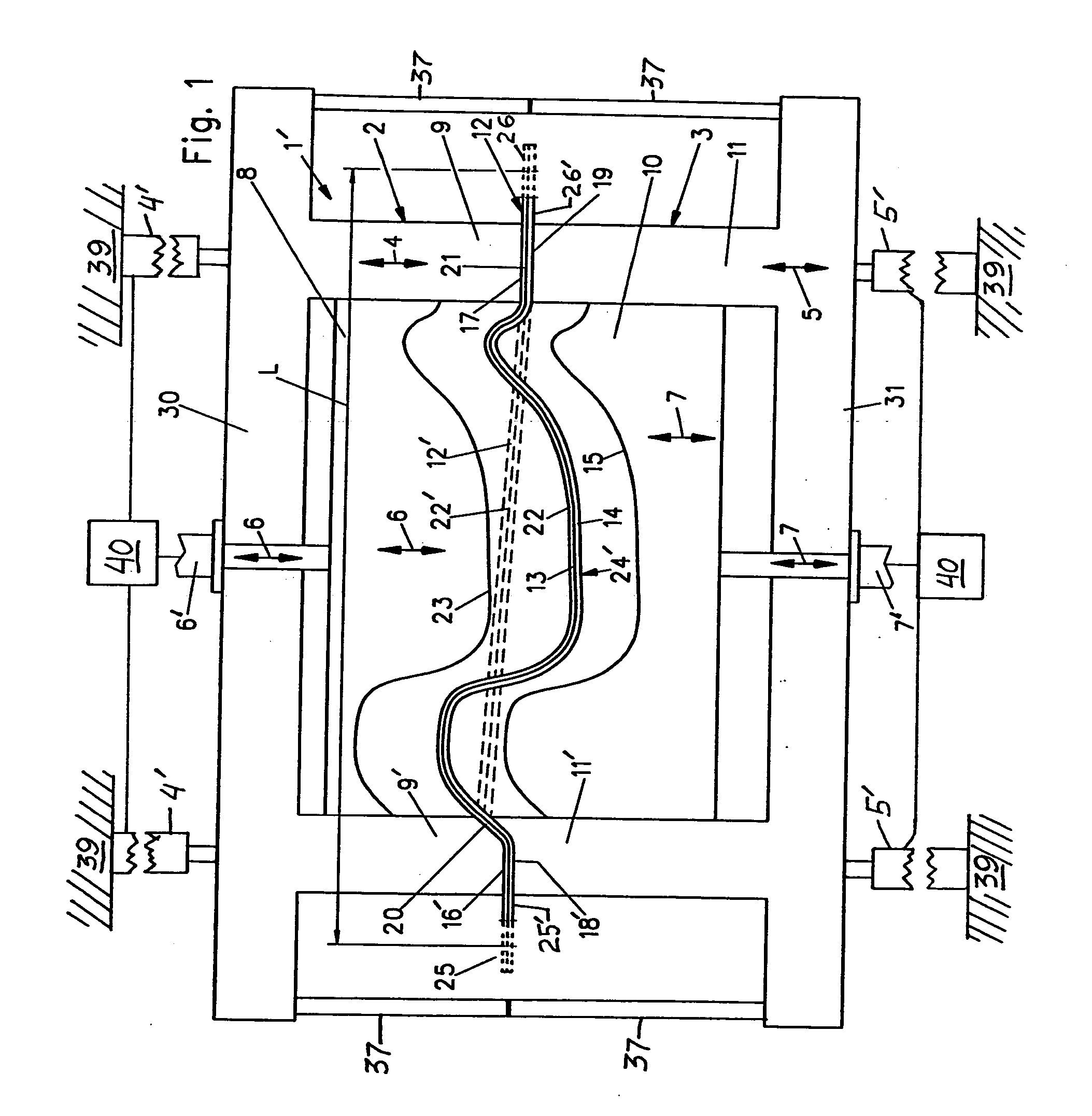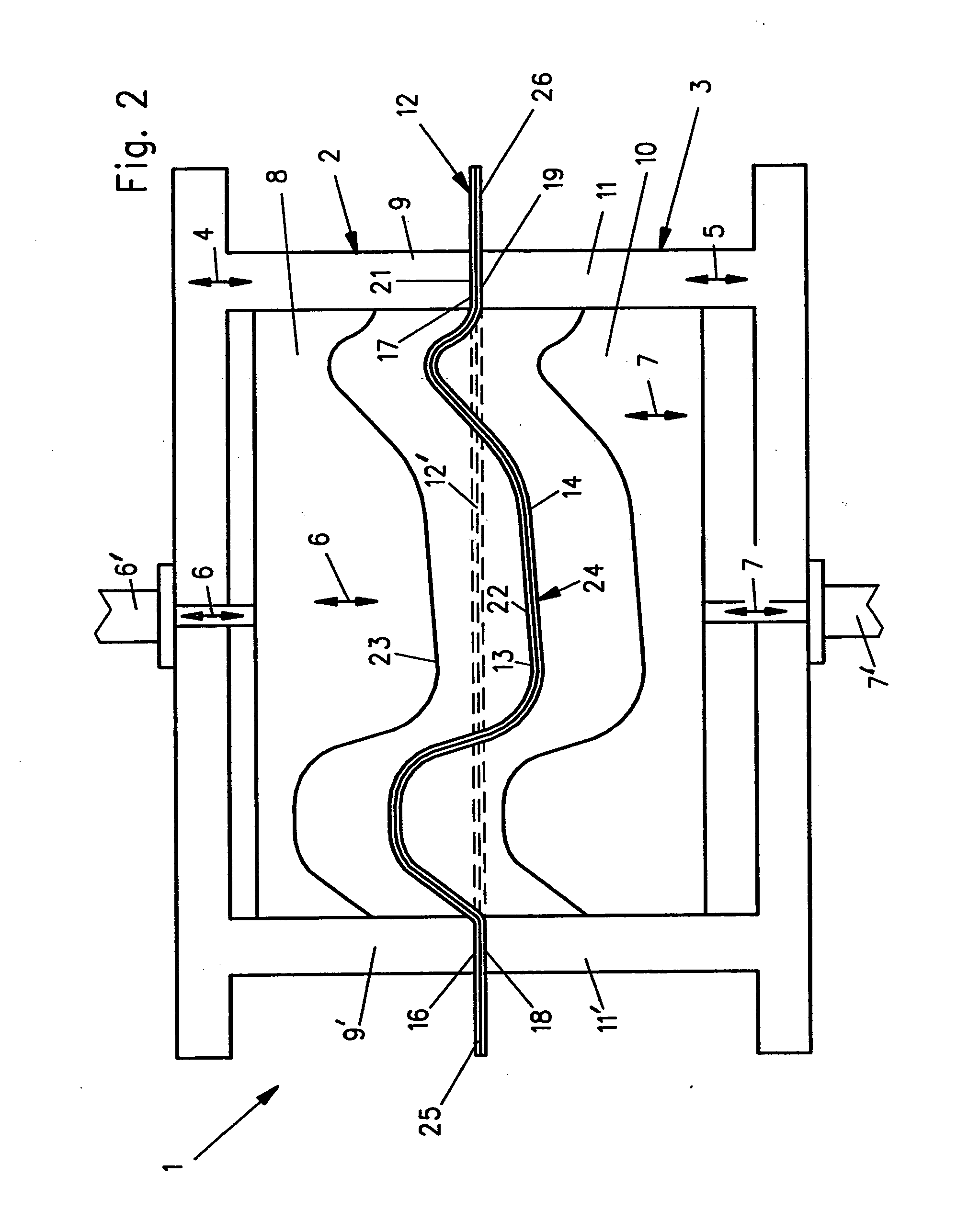Method and apparatus for molding a laminated trim component without use of slip frame
- Summary
- Abstract
- Description
- Claims
- Application Information
AI Technical Summary
Benefits of technology
Problems solved by technology
Method used
Image
Examples
Embodiment Construction
[0023]FIGS. 1 and 2 are basically similar schematic diagrams of two slightly different variants of a molding apparatus 1, 1′ according to the invention. First the similar or consistent features of the apparatuses 1 and 1′ will be described, and then the difference will be described.
[0024] The apparatus 1, 1′ comprises a structural machine frame 39 supporting an upper or first mold tool 2, and a lower or second mold tool 3, which are movable relative to one another and relative to the machine frame 39. More particularly, the upper or first mold tool 2 includes a main mold or inner core mold 8 and at least one outer frame or outer edge mold 9, 9′ arranged at at least one lateral edge or a perimeter of the inner core mold 8. Similarly, the lower or second mold tool 3 includes an inner core mold 10 and at least one outer edge mold 11, 11′ arranged at at least one lateral edge or a perimeter of the inner core mold 10. The outer edge mold or molds 9, 9′ can extend continuously around the...
PUM
| Property | Measurement | Unit |
|---|---|---|
| Length | aaaaa | aaaaa |
| Size | aaaaa | aaaaa |
| Force | aaaaa | aaaaa |
Abstract
Description
Claims
Application Information
 Login to View More
Login to View More - R&D
- Intellectual Property
- Life Sciences
- Materials
- Tech Scout
- Unparalleled Data Quality
- Higher Quality Content
- 60% Fewer Hallucinations
Browse by: Latest US Patents, China's latest patents, Technical Efficacy Thesaurus, Application Domain, Technology Topic, Popular Technical Reports.
© 2025 PatSnap. All rights reserved.Legal|Privacy policy|Modern Slavery Act Transparency Statement|Sitemap|About US| Contact US: help@patsnap.com



